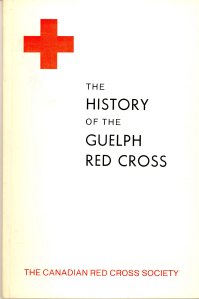
The Petrie Building
One of the most distinctive building in downtown Guelph is the four story Petrie Building, with its green painted wooden window panels and stamped galvanized iron facade. One of the very few remaining buildings in Canada with this type of facade, its exterior was historically designated in 1990. But the upper floors of the Petrie Building are vacant, and the green paint is there to cover long boarded up windows.
Designed by architect John Day for Guelph pharmacist A. B. Petrie in 1882, a galvanized iron mortar and pestle sits on the top of the structure in recognition of the building’s original use as a pharmacy. I have to admit I never could figure out what the strange bowl structure was, but it certainly added to the building’s singular attraction.

Mortar and Pestle
Owned by the same family since 1976, the Petrie Building has become the focus of a local advocacy group and subject of a short documentary, A Building Worth Saving. There is concern that the building is in serious need of restoration, and worry that it may fall victim to demolition by neglect at some point. A Facebook group “Save the Petrie Building” was created earlier this year by archaeologist David J. Knight, and the group was profiled in a recent Facebook Story, Guelph, Ontario: Saving a slice of downtown.
For those interested in the history and preservation of this local landmark, the Guelph and Wellington Branch of the Architectural Conservancy of Ontario will be hosting a lecture by Mr. Knight, The Petrie Building: an Archaeology of Social Networks, at 7 p.m. on October 17, 2012 at the Bookshelf eBar on Quebec Street. And on Friday, October 28, a one-day exhibit of art inspired by the Petrie Building will be presented at 7 p.m. at ED Video on Baker Street. Photos of the building’s upper floors will be on display.

A faded “A.B. Petrie Chemist”
And speaking of photos, I found a photo on the Guelph Museum’s website of a secret passageway that leads from the neighbouring Cutten Kelly Building to the Petrie Building. Other photos of the Petrie Building in the Museum’s collection indicate those windows have been boarded up and painted green since 1981. So what would a restored Petrie Building look like? It’s a question to which I’d love to know the answer. A restored heritage building with a similar sheet metal facade is Victoria Hall in Hamilton…this National Historic Site of Canada is a stunning white!
Postscript: I attended the Petrie Building presentation by David Knight on October 17 at the eBar, and it was quite fascinating. His slideshow included a few photos of the upper floors of the building and he shared tales of graffiti on interior walls, mysterious inner courtyards, and 1890s-era flocked wallpaper still hanging on the walls of the second floor. Intriguingly, the building’s third floor was only accessible from the adjacent Cutten Kelly building, and the fourth floor has no access at all. This building certainly holds many mysteries! Lots more photos of the interior are promised at the exhibit celebrating the 130th anniversary of the Petrie Building to be held on October 26th at ED Video.































